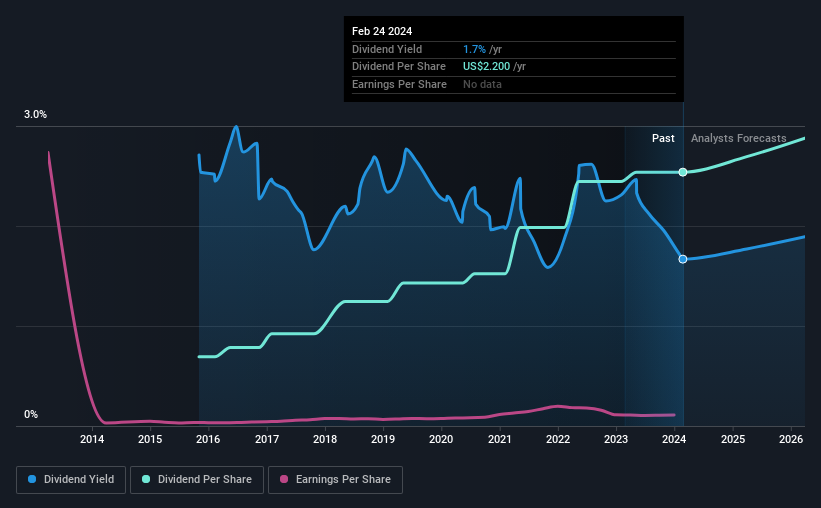Houlihan Lokey, Inc. (NYSE:HLI) Stock Goes Ex-Dividend In Just Four Days
Readers hoping to buy Houlihan Lokey, Inc. (NYSE:HLI) for its dividend will need to make their move shortly, as the stock is about to trade ex-dividend. The ex-dividend date is one business day before a company's record date, which is the date on which the company determines which shareholders are entitled to receive a dividend. The ex-dividend date is an important date to be aware of as any purchase of the stock made on or after this date might mean a late settlement that doesn't show on the record date. Therefore, if you purchase Houlihan Lokey's shares on or after the 29th of February, you won't be eligible to receive the dividend, when it is paid on the 15th of March.
The company's next dividend payment will be US$0.55 per share, and in the last 12 months, the company paid a total of US$2.20 per share. Based on the last year's worth of payments, Houlihan Lokey has a trailing yield of 1.7% on the current stock price of US$131.85. Dividends are an important source of income to many shareholders, but the health of the business is crucial to maintaining those dividends. That's why we should always check whether the dividend payments appear sustainable, and if the company is growing.
Check out our latest analysis for Houlihan Lokey
If a company pays out more in dividends than it earned, then the dividend might become unsustainable - hardly an ideal situation. Houlihan Lokey paid out 54% of its earnings to investors last year, a normal payout level for most businesses.
Generally speaking, the lower a company's payout ratios, the more resilient its dividend usually is.
Click here to see the company's payout ratio, plus analyst estimates of its future dividends.
Have Earnings And Dividends Been Growing?
Companies with consistently growing earnings per share generally make the best dividend stocks, as they usually find it easier to grow dividends per share. If business enters a downturn and the dividend is cut, the company could see its value fall precipitously. This is why it's a relief to see Houlihan Lokey earnings per share are up 6.3% per annum over the last five years.
Another key way to measure a company's dividend prospects is by measuring its historical rate of dividend growth. In the past eight years, Houlihan Lokey has increased its dividend at approximately 18% a year on average. It's encouraging to see the company lifting dividends while earnings are growing, suggesting at least some corporate interest in rewarding shareholders.
To Sum It Up
Is Houlihan Lokey worth buying for its dividend? Houlihan Lokey has been generating some growth in earnings per share while paying out more than half of its earnings to shareholders in the form of dividends. In sum this is a middling combination, and we find it hard to get excited about the company from a dividend perspective.
If you're not too concerned about Houlihan Lokey's ability to pay dividends, you should still be mindful of some of the other risks that this business faces. In terms of investment risks, we've identified 1 warning sign with Houlihan Lokey and understanding them should be part of your investment process.
If you're in the market for strong dividend payers, we recommend checking our selection of top dividend stocks.
Have feedback on this article? Concerned about the content? Get in touch with us directly. Alternatively, email editorial-team (at) simplywallst.com.
This article by Simply Wall St is general in nature. We provide commentary based on historical data and analyst forecasts only using an unbiased methodology and our articles are not intended to be financial advice. It does not constitute a recommendation to buy or sell any stock, and does not take account of your objectives, or your financial situation. We aim to bring you long-term focused analysis driven by fundamental data. Note that our analysis may not factor in the latest price-sensitive company announcements or qualitative material. Simply Wall St has no position in any stocks mentioned.

